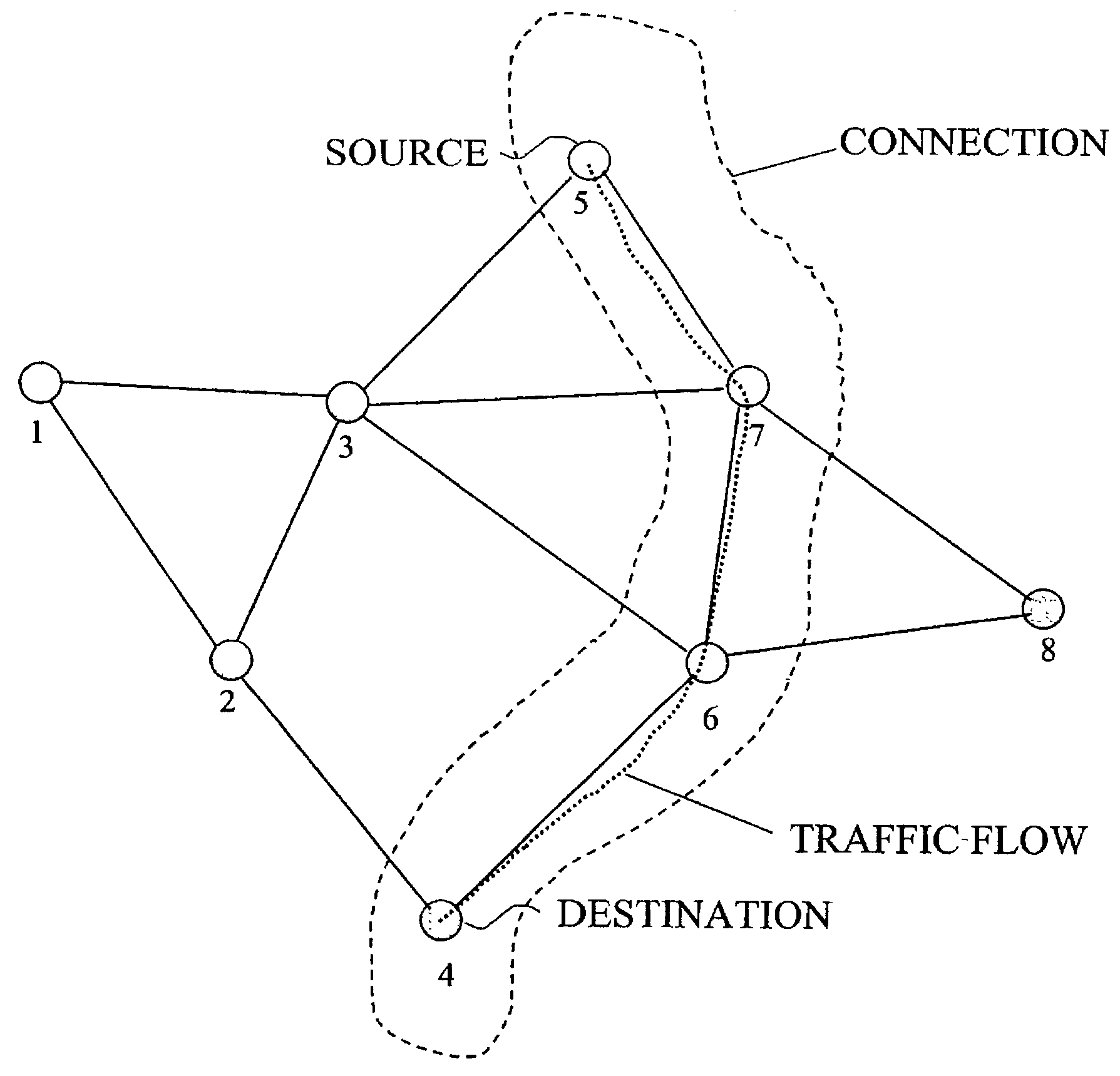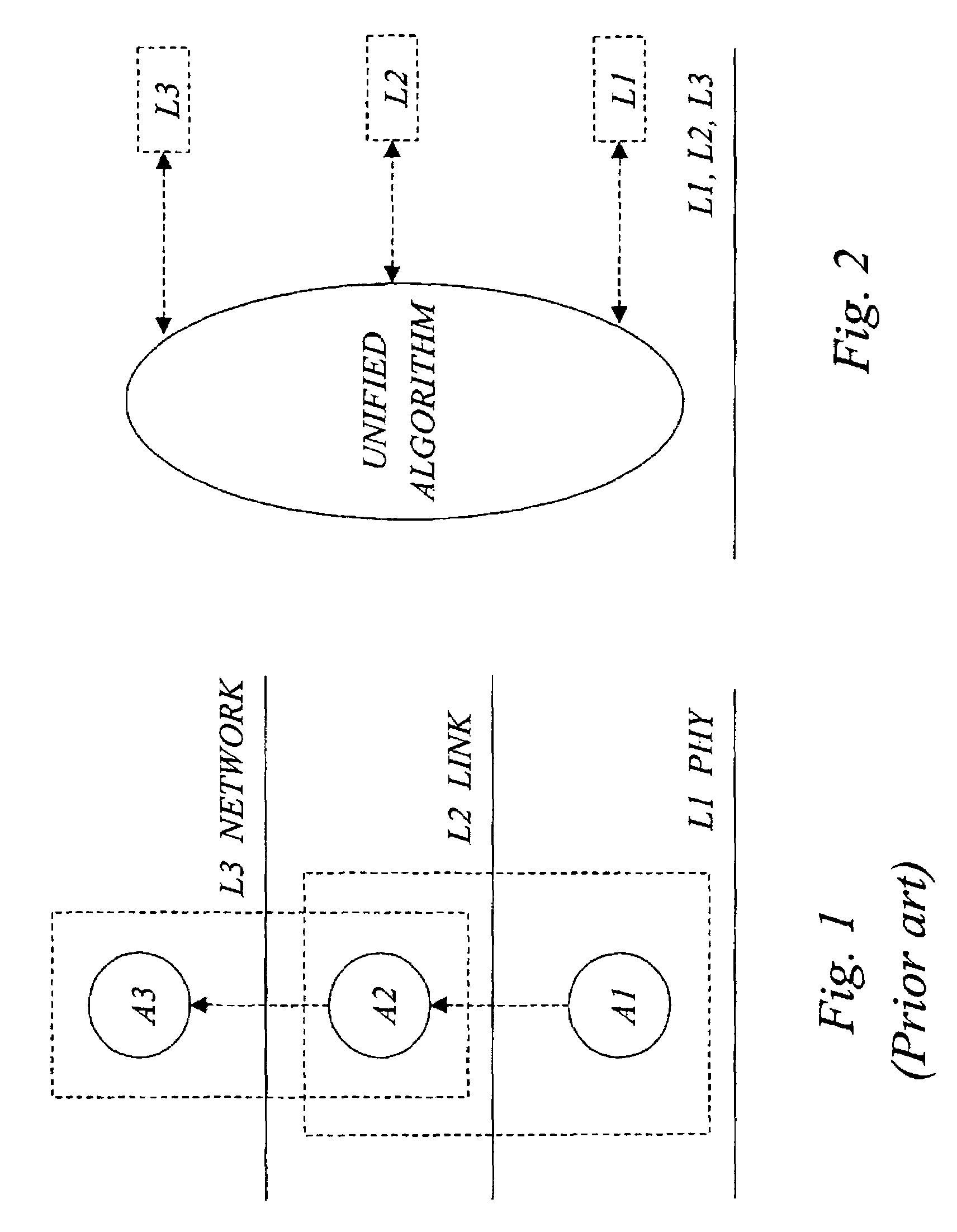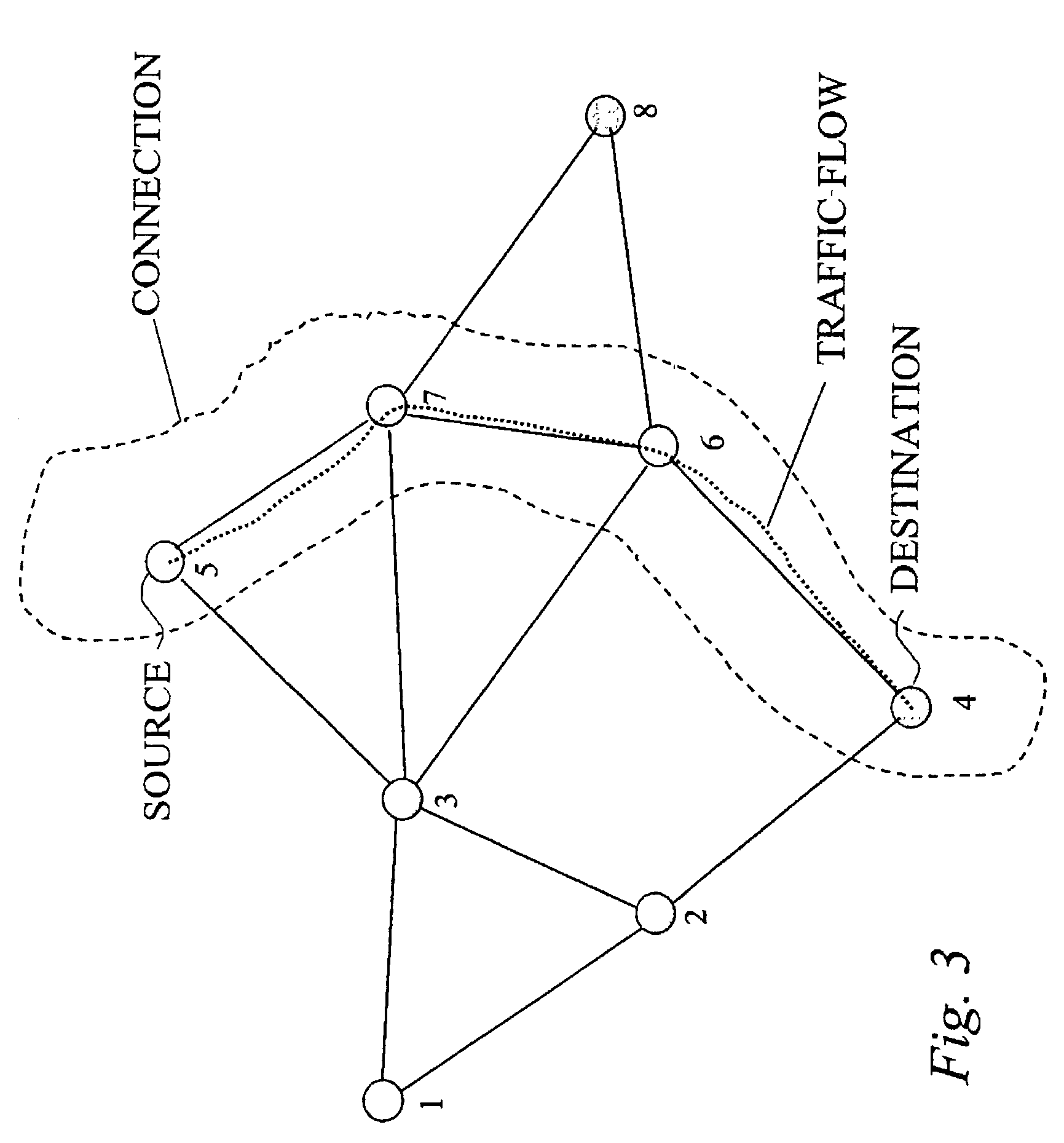Cross-layer integrated collision free path routing
a cross-layer, collision-free technology, applied in data switching networks, high-level techniques, frequency-division multiplexes, etc., can solve the problems of high computational complexity, expensive exhaustive search, and immense complexity of qos support in multi-hop networks, and achieve the effect of improving the utilization of available resources in a communication network
- Summary
- Abstract
- Description
- Claims
- Application Information
AI Technical Summary
Benefits of technology
Problems solved by technology
Method used
Image
Examples
Embodiment Construction
[0072]Routing and channel access schemes will first be summarized with reference to FIG. 1. In conventional schemes for routing and channel access, each protocol layer is generally associated with its own independent algorithm A1, A2, A3. Sometimes abstraction data may be sent from a lower layer to a higher layer to provide some form of “soft” or sequential cross-layer integration. Abstraction data from the lower layer is simply transferred to the higher layer for use by the higher-layer algorithm, with no feedback towards the lower-layer for adaptation. For example, abstraction data concerning link bandwidth may be transferred from the link layer, L2, to the routing algorithm A3 on the network layer L3. The bandwidth information may then be used by the routing algorithm, which for example may change path assignment if the bandwidth is too low. This approach of using several independent algorithms, each being concerned with its own objective function, represents a relatively simple ...
PUM
 Login to View More
Login to View More Abstract
Description
Claims
Application Information
 Login to View More
Login to View More - R&D
- Intellectual Property
- Life Sciences
- Materials
- Tech Scout
- Unparalleled Data Quality
- Higher Quality Content
- 60% Fewer Hallucinations
Browse by: Latest US Patents, China's latest patents, Technical Efficacy Thesaurus, Application Domain, Technology Topic, Popular Technical Reports.
© 2025 PatSnap. All rights reserved.Legal|Privacy policy|Modern Slavery Act Transparency Statement|Sitemap|About US| Contact US: help@patsnap.com



